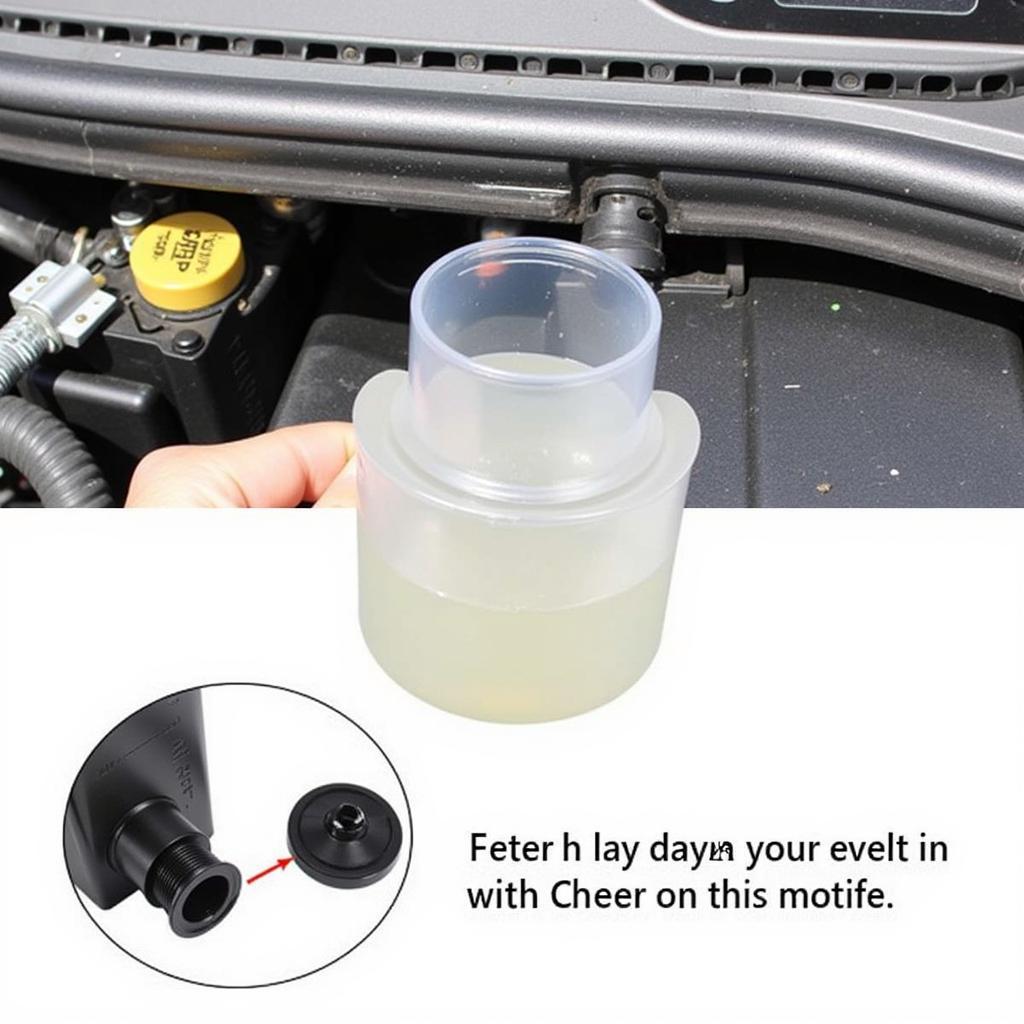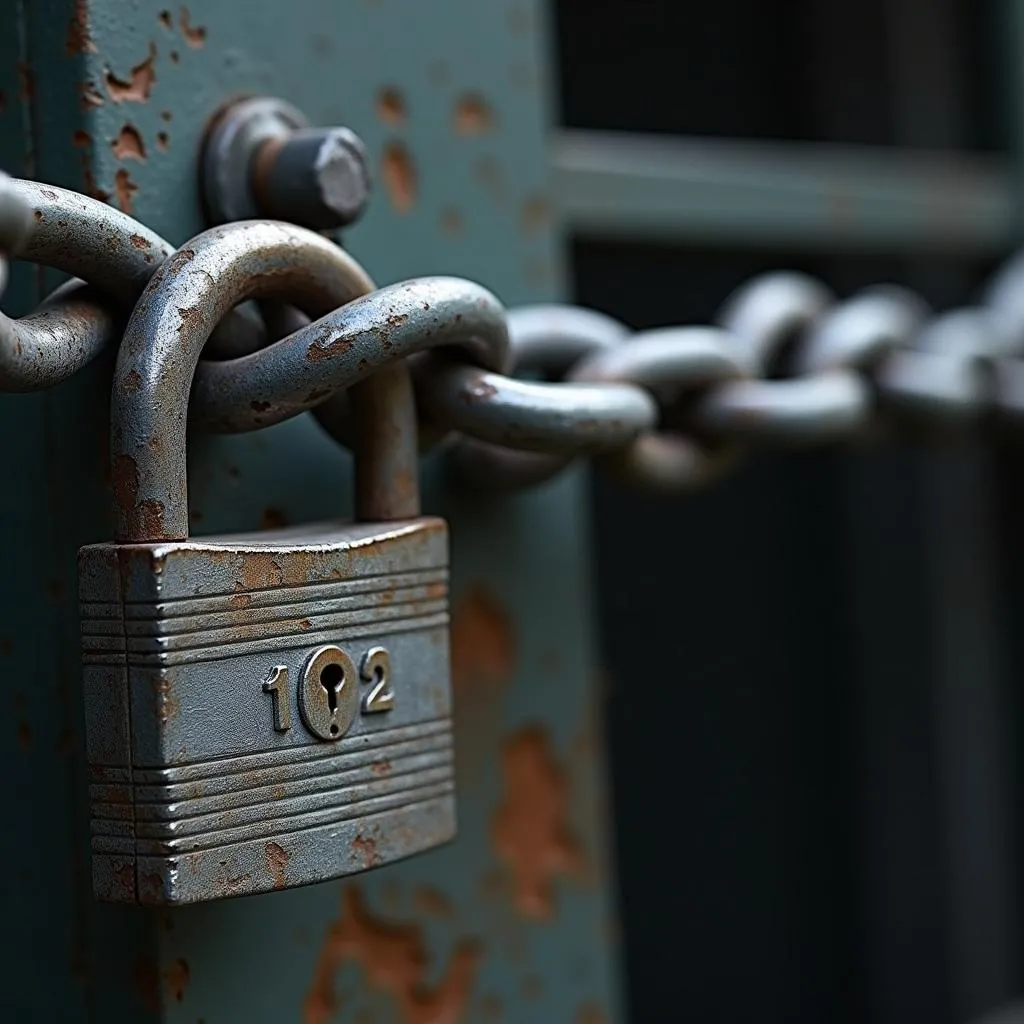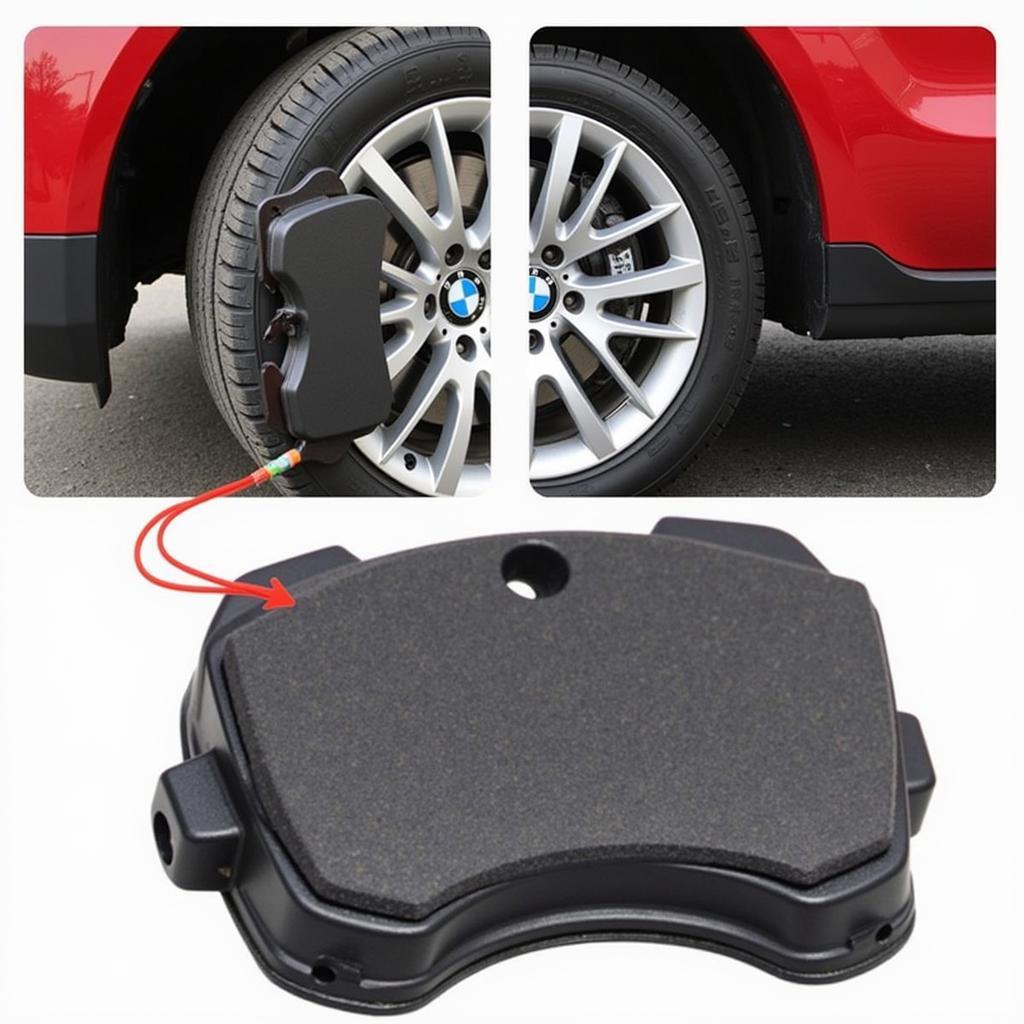If you’re driving a VW Golf and see the “check brake pads” warning light, it’s essential to address it promptly. This warning indicates your brake pads are wearing thin and need attention. Ignoring this warning can lead to reduced braking efficiency and potentially dangerous situations. This article provides a comprehensive guide to understanding the warning light, potential causes, and how to resolve them.
Understanding Your VW Golf Brake Pad Warning Light
The “check brake pads” warning light usually illuminates on your dashboard as a bright yellow or red symbol. It may be accompanied by a message on the driver’s information display. This warning system is triggered by a sensor embedded within your brake pads. As the pads wear down, the sensor sends a signal to your car’s computer, activating the warning.
Common Causes of the “Check Brake Pads” Warning
- Worn Brake Pads: The most common cause is simply worn-down brake pads. Over time, the friction material on the pads wears away, eventually triggering the sensor.
- Faulty Brake Pad Sensor: While less common, a malfunctioning sensor can trigger a false warning. A damaged wire or connector in the sensor circuit can interrupt the signal.
- Low Brake Fluid: Low brake fluid levels can also trigger the warning light. Since brake fluid level is critical for proper braking performance, this warning should never be ignored.
- Other Brake System Issues: In some cases, issues like a failing brake caliper or problems with the ABS (Anti-lock Braking System) can also trigger the “check brake pads” warning.
 VW Golf Brake Pad Sensor
VW Golf Brake Pad Sensor
Diagnosing the Problem
Determining the root cause of the warning is crucial for effective repair. Here’s a step-by-step approach:
- Check the Brake Pad Thickness: Visually inspect your brake pads through the spaces between the wheel spokes. If the friction material is less than 1/4 inch thick, they are likely due for replacement.
- Inspect the Brake Pad Sensor: Look for any visible damage to the sensor wires or the connector. A broken wire or loose connection will need to be repaired or the sensor replaced.
- Check the Brake Fluid Level: Locate the brake fluid reservoir under the hood of your VW Golf. Ensure the fluid level is between the minimum and maximum marks on the reservoir.
- Seek Professional Diagnosis: If you are unable to identify the issue or suspect a more complex problem, it’s best to consult a qualified mechanic specializing in VW vehicles.
 Checking Brake Fluid in a VW Golf
Checking Brake Fluid in a VW Golf
Addressing the “Check Brake Pads” Warning
- Brake Pad Replacement: If the brake pads are worn, replace them with new ones. It’s generally recommended to replace both the pads and the rotors at the same time to ensure optimal braking performance and even wear.
- Brake Pad Sensor Replacement: If you discover a faulty sensor, replacing it is a relatively straightforward procedure. New sensors are typically installed along with new brake pads.
- Addressing Other Issues: For problems beyond worn pads or a faulty sensor, such as low brake fluid or brake system malfunctions, consult a qualified mechanic for proper diagnosis and repair.
Importance of Timely Action
Addressing the “check brake pads” warning immediately is crucial for your safety and can prevent more costly repairs down the line. Driving with worn brake pads reduces your stopping power and can increase the risk of accidents. Furthermore, neglecting the issue can lead to damage to the brake rotors, requiring more extensive and expensive repairs.
VW Golf Brake Pad Warning Light Reset
After addressing the issue that triggered the “check brake pads” warning, the light should go off automatically. However, in some instances, you might need to reset the warning light manually. This usually involves a specific procedure outlined in your VW Golf owner’s manual. You can also find information on resetting the brake pad warning light for specific VW Golf models on online forums or by consulting a mechanic.
Expert Insights
“Regular brake inspections are crucial for maintaining optimal safety and preventing unexpected issues,” says John Miller, a certified VW mechanic with over 20 years of experience. “Don’t underestimate the importance of addressing the ‘check brake pads’ warning promptly, as it directly impacts your stopping distance and overall safety on the road.”
 VW Golf Brake Pad Replacement
VW Golf Brake Pad Replacement
Conclusion
The “check brake pads” warning in your VW Golf is a vital safety feature designed to alert you to potential braking issues. Understanding what triggers this warning, how to diagnose the problem, and taking prompt action can ensure your safety on the road and prevent further damage to your vehicle. If you’re unsure about any aspect of addressing this warning, consulting a qualified mechanic specializing in VW vehicles is always the recommended course of action.
FAQs about VW Golf Check Brake Pads Warning
1. How long can I drive with the “check brake pads” warning light on?
You should address the warning as soon as possible. Driving with worn brake pads significantly reduces your stopping distance and can be dangerous.
2. Can I replace the brake pads myself?
Replacing brake pads requires mechanical knowledge and tools. If you’re not comfortable with car maintenance, it’s best to have a professional handle it.
3. How often should I check my VW Golf’s brake pads?
It’s recommended to have your brake pads inspected every 10,000 to 20,000 miles or as part of your regular maintenance schedule.
4. Why is my brake warning light flashing?
A flashing brake warning light usually indicates a more serious issue with your braking system, such as low brake fluid or a malfunctioning ABS.
5. How much does it cost to replace VW Golf brake pads?
The cost varies depending on factors like labor costs, location, and whether you choose OEM or aftermarket parts. Contact a local mechanic for a quote.
6. Can I reset the brake pad warning light myself?
You might be able to reset the light yourself by following the instructions in your owner’s manual. However, it’s best to consult a mechanic if you’re unsure.
7. What if the warning light stays on after replacing the brake pads?
This could indicate a faulty sensor or another issue within the braking system. It’s best to have a mechanic diagnose and address the problem.


